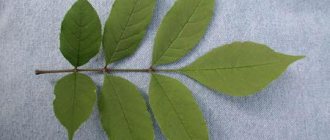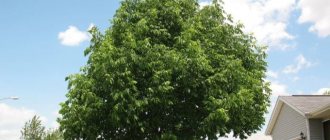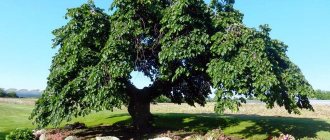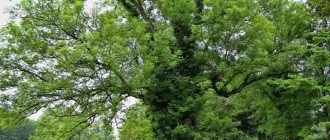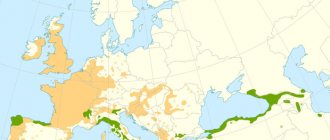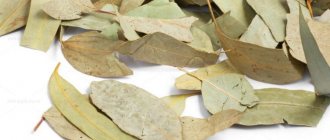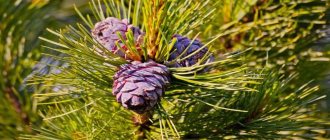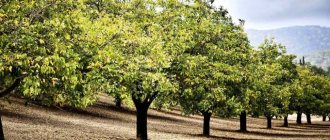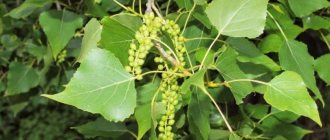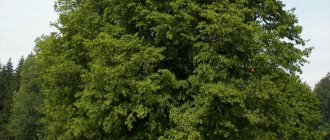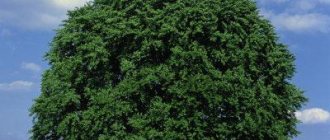The luxurious, majestic ash tree is known throughout the world. A tall, slender trunk and not very dense crown look attractive and elegant.
In Russian, the name of this handsome man comes from the words “light, clear.” The sun's rays penetrate the branches and leaves, and on a fine day the tree looks as if it is permeated with golden reflections. The crown has an openwork appearance. According to ancient beliefs, ash was considered a tree of purity and light. According to Scandinavian myths, life originated from this tree.
Religious objects, sculptures, interesting souvenirs, furniture and household utensils were made from wood. The fruits and leaves of ash have healing properties, which has also been known for a long time. Therefore, they were used to treat and prevent diseases.
Description of the genus
Ash (Latin name fraxinus) is a representative of the olive family. Grows as a tree or multi-stemmed shrub. There are many varieties of this beautiful tree. Common ash is found most often in our country.
Every resident of Russia knows from childhood what an ash tree looks like. This tree has a straight trunk. Its height varies widely - from 5-6 to 40 m. The trunks of young trees are covered with brownish-green bark, which gradually darkens, and frequent cracks appear on it. The branches grow sparsely, their ends are directed upward, reaching towards the sun.
Ash fruits are lionfish, which contain small oval nuts. In several varieties they are edible and are even an obligatory component of the national dishes of some peoples. The nut fruit can reach a length of up to 5 cm. They remain on trees from autumn to spring.
The foliage of most varieties appears after flowering. Each leaf has several plates - from 5 to 15 wedge-shaped. The buds are black or brown-brown. The root system does not go deep into the soil, because it does not have a tap root. Therefore, a strong hurricane can overturn a tree, turning out the roots.
Types of ash
There are more than 60 varieties of ash. Each has its own distinctive features. The most common ones are the following.
- Common ash. Its leaves have characteristic carved edges. The height can reach more than 30 m. The trunk of a young tree is covered with gray-green bark, which with age becomes covered with cracks and acquires a dark gray color. The buds are black with small specks. Flowering occurs in March, the inflorescences appear earlier than the leaves. The common ash tree lives for a very long time - more than 300 years. Common ash wood is a valuable raw material for the wood processing industry.
- American ash. Its leaves are distinguished by the fact that they are darker below than above. The shape is similar to the foliage of a walnut, but the ends are sharper and wedge-shaped. It blooms early, with buds appearing by early April. Doesn't like drought.
- Black ash. It has dark, thick bark. This tree never blooms. Morozov is not afraid.
- White ash. It is also called semolina. The height of the tree is up to 20 m. The crown is often round or ovoid. When branches are cut, manna comes out - sap that solidifies in the air. This is the reason why white ash is used in the pharmaceutical industry. White ash blooms with beautiful white panicle inflorescences. Due to its beauty, this tree is used as an ornamental plant for parks, gardens, etc.
- Narrow-leaved ash. The name comes from the shape of the foliage. It tolerates frost easily and begins to bloom in May-June. The height can reach about 20 m. It grows as a bush or as an ordinary tree.
- Manchurian ash. The leaves are distinguished by carved edges, the trunk is straight and slender, the crown is raised high. The branches are located obliquely. Blooms from late spring to early autumn. Often found in Russia.
- Lanceolate ash. This tree is not tall compared to other varieties: it rarely reaches 15 m in height. The buds are brick-brown and have down. Loves light, is not afraid of frost and drought.
- Fluffy ash. The reason for this name is the light fluff that covers the young shoots.
- Ball-shaped ash Nana. It is distinguished by its slow growth, small height: 7 – 8 m. Resembles a shrub. Resistant to low temperatures.
- Chinese ash (Ailanthus). A beautiful tree that resembles a palm tree due to its long (sometimes up to 50 cm) leaves. It grows very quickly: it can grow 1 m in a year. It blooms with large greenish-yellow panicle inflorescences. Flowering begins closer to the second half of summer.
In our country it grows in all regions. More common varieties are common ash, Siberian ash, and Caucasian ash. This wonderful tree is used in medicine, national economy, as an ornamental plant, etc.
Habitat
Due to its unpretentious nature, the species is very widespread: it can be seen on almost all continents. In central Russia, Fraxinus is most often found in mixed forests. Ash also feels great along the banks of rivers and lakes.
Interesting! The plant is popularly called holly. In its natural environment, ash shares a common habitat with oak. In the old days, people often observed both trees. If the first leaves of the oak tree appeared earlier in the spring, it was believed that the summer would be dry.
Common ash is found more often than other species on our territory.
The tree loves soils rich in calcium. But it is adapted to live on any other soils. A very light-loving plant. It is rare that a pure forest consisting only of ash is formed.
Easily copes with all natural circumstances: drought, frost, and even flooding.
Spreading
This plant is found all over the world. In Russia, ash grows mainly in the southern regions. The beauty and healing properties, as well as the quality of the wood, make it popular. It is used as an ornamental plant to decorate park areas, city alleys, etc. And also as a valuable raw material for industry. In Russia, the most common variety is common ash. It is planted to decorate landscape designs and is also used for the production of wood products.
Use of woody plants
Due to its high decorative characteristics and medicinal properties, the ash tree is used not only for landscaping and protecting afforestation. Ash is a technical species that is in great demand in industry.
Areas of use
The main advantage of the crop is its durable and flexible wood, which is widely used in the furniture industry and aircraft manufacturing, and serves as a material for the manufacture of garden tools, sports equipment, some parts of weapons, railings, window frames and parquet. Natural wood has a very beautiful light pink or yellowish tint, giving the room a unique look. In the production of musical instruments (guitars and basses), ash is chosen by both the world's largest brands and small firms.
The bark and leaves are used to make brown, blue and black dyes. Ash root has a very beautiful texture. It is used to make plywood and veneer. Beehives are made from the bark of large trees. Dry and fresh leaves are fed to livestock. Small original crafts are made from growths on wood (burls).
The buds, roots, flowers, leaves, seeds and fruits of the tree are used for medicinal purposes. In some countries, canned fruits are eaten and used as a savory seasoning for vegetables and meat. Dried juice (manna) is a valuable substitute for industrial sugar.
Ash is a favorite breed of magicians and healers. Its pure, subtle energy aligns the psyche, develops clairvoyance abilities, and can show the future. Ash amulets protect the owner from negative energy. The wood is used to make fortune-telling runes. The power of the flame of ash wood has healing properties and has a beneficial effect on the state of mind. A fire lit at Christmas promotes prosperity. Ash leaves help to attract love, scattered in the four corners of the house - they will protect against evil forces. Finding a leaf with the same number of teeth on both sides brings good luck.
Landscape design
The plant attracts designers with its elegant, slender trunk and lush crown, which creates a light and airy atmosphere in the garden. An ash tree looks spectacular when planted alone, fully revealing the beauty of the leaves and the texture of the bark. As a background plant, it emphasizes the brightness and expressiveness of many ornamental shrubs and flowering perennials.
In combined plantings it is ideally combined with larch, rowan and linden. As the trees grow, they form one lush decorative crown. Willow and maple get along well with ash. It grows poorly next to the representative of Beech trees - oak. Planting several types of ash in one area looks impressive. Weeping forms are good along the banks of artificial reservoirs, along paths, and as canopies over gazebos and benches.
You can alternate the crop with coniferous plants (spruce, pine, thuja, junipers). More contrasting compositions are obtained from ash varieties with yellow foliage and gray, silver or blue needles. The original shape of the leaves and lionfish will stand out against the background of evergreen crops.
The main thing when arranging seedlings into decorative groups is to take into account the density and diameter of the crown of an adult plant, the speed and period of its final formation. This will allow you to accurately determine the distance between the designed plants. Ash has a medium-density crown, so shade-loving, unpretentious crops are planted nearby.
Medicines and folk remedies
The substances contained in the leaves and fruits of ash have many beneficial properties. Dried raw materials are used to prepare medicinal decoctions and infusions, and added to herbal preparations. Essential oils from the fruits of the plant have a detrimental effect on fungi and bacteria. In Germany and Switzerland, antirheumatic drugs based on ash are produced. The food supplement "Revmavit" includes tree bark extract.
In folk herbal medicine, crushed bark and leaves are used:
- in the treatment of nervous system disorders;
- for cardiovascular diseases;
- to increase male strength;
- for liver and kidney diseases;
- in the treatment of dry cough;
- as a diuretic;
- with pneumonia;
- for joint pain;
- with bleeding;
- for dysentery.
Chronic polyarthritis is treated with crushed seeds. Apply bark or crushed fresh leaves to cuts and shallow wounds. An alcoholic tincture of the fruit is used for varicose veins. Powder from dry leaves is used for inflammation of the pancreas.
However, despite all the positive properties, the plant is poisonous. Folk remedies based on ash are contraindicated for hypertension; herbal preparations are not prescribed for severe atherosclerosis. When planting a tree in your summer cottage, keep in mind that pollen is a strong allergen that can cause contact dermatitis.
Planting and care
This is not a particularly demanding plant regarding environmental conditions. But, nevertheless, in order for the seedlings to be well accepted, you need to know how to plant correctly. Open areas with plenty of sun and calcium-rich soil are suitable for it. Excess moisture, as well as alkaline and acidic soils are not suitable for planting; the reaction must be neutral. If you plan to plant this tree in a garden plot, then you should give preference to the light side.
To grow an ash tree, planting must be carried out according to all the rules. You need to dig a hole into which the root system of the seedling will fit. It is recommended to place drainage at the bottom: crushed stone, broken brick, pebbles, etc. and water it. The seedling must be installed vertically, for this you can use supports. Tilt is not allowed. Then the hole is filled with a mixture of soil, sand and humus. After filling it is compacted. When planting large varieties, the distance between seedlings on the site should be 5 m. Low-growing varieties can be planted closer - about 3 m, then as they grow they will not shade each other.
The growth of seedlings depends on the fertility of the soil. On fertile soil, the height of the tree can increase up to 0.5 m over the course of a year. Complex and troublesome care for a young tree is not required. Watering is required only in case of severe drought. It is necessary to remove dry and diseased branches, trim young shoots to give the crown a beautiful shape. Pruning is done in the spring. Nitrogen-containing mixtures and manure are used for fertilizer.
In the first years after planting, it is recommended to cover the soil around young plants with compost or organic materials - mulch before the onset of frost. Mature trees need this procedure if the winter is expected to be very frosty. Young ash trees may suffer from low temperatures.
Color combinations
A rich palette of shades makes ash universal for any room and any style.
In addition, you can decorate the interior from ash wood without resorting to additional paints.
For small rooms and laconic styles - light shades: vanilla - will give the atmosphere freshness and lightness, which suits the interior in the Provence style; bleached - white ash seems to be created for small rooms, it will visually expand the walls, and will look very good in the minimalist style; mother-of-pearl shade with a pearl tint is the chic of a classic interior; a silver palette will add coolness; cream shade - ideal for a bedroom and looks good in the Baroque style, gold - a dark golden shade will give the interior in a classic style a special coziness.
Dark shades of ash are for more spacious rooms. The color of dark chocolate looks elegant and noble. All shades of ash are in perfect harmony with each other. Combine dark and light tones, cold and warm, and you will create your own unforgettable exclusive style.
Reproduction
This plant can reproduce generatively and vegetatively, i.e. from seeds, or by cuttings or seedlings. If you want to grow trees from seeds, it is better to use last year's seeds.
They should be planted in late summer to allow them to germinate and develop. For planting, you will need to prepare special furrows 5 cm deep. Shoots will appear by May. To care for them, you will need watering and weeding, and loosening the soil 1 – 2 times a month.
Propagation by seeds will require considerable effort and expense. Therefore, this method is only suitable for planting over a large area. And for planting one or three or four trees, it is better to purchase seedlings or cuttings.
Diseases and pests
As a result of exposure to unfavorable factors - sudden changes in temperature, lack of nutrients in the soil, improper care, diseases appear, despite their unpretentiousness. Diseases are also caused by insects that infect the plant. These include:
- variegated pine beetle, which damages the trunk and branches, making the wood unsuitable for processing and use;
- narrow-bodied emerald borer - larvae develop under the bark, and adult insects eat the leaves;
- Spanish fly eating tree leaves;
- corrosive woody tree;
- seed-eater-weevil, devouring fruits.
Meaning and Application
Ash is a beautiful creation of nature that delights with its beauty and grandeur. That’s why it is planted in parks, gardens, squares, etc. as an ornamental plant. But in addition to beauty, this wonderful tree has many positive properties that are used for medicinal, industrial and other purposes.
Ash wood is a valuable raw material for the manufacture of furniture, sports equipment, musical instruments, wall and floor coverings in residential and industrial premises. Density is average. It is valued for its wear resistance and flexibility. It is thanks to this quality that it is possible to make furniture of bent shapes from it, for which other types of wood that have the necessary qualities, but are not flexible, are unsuitable. A beautiful beige or slightly pink shade, interesting pattern and texture give such products a special charm. Therefore, ash veneer is used for finishing products made from other types of wood that have the desired quality, but are not attractive in appearance. Floor coverings made of compact ash planks last for decades without losing their attractiveness or deforming.
Disadvantages of ash wood products include a high probability of damage due to pests, the possibility of fire, and (mainly) high cost.
Leaves, buds, fruits, and bark are used as raw materials for medicines in pharmaceutical production. The fruits of some varieties are edible, and spicy spices are prepared from them.
Physical properties
Some other physical properties of ash are low thermal conductivity, meaning the wood retains heat well.
This property is used to create warm floors. It does not absorb moisture very actively due to its high density, but in a humid environment it can change volume. Therefore, ash is not suitable for cladding baths and saunas; it is better to use another tree. Ash can fully combust at temperatures as low as 450 degrees. When burned, it releases oxygen and a lot of heat. Ash ash is a valuable organic fertilizer rich in potassium. However, using ash in this way, that is, for firewood, is extremely unprofitable. The article will discuss its much more effective use.
